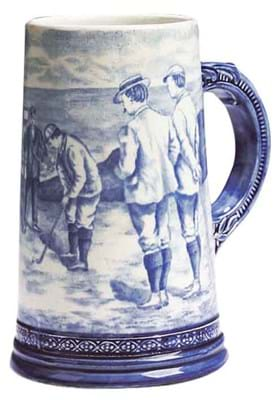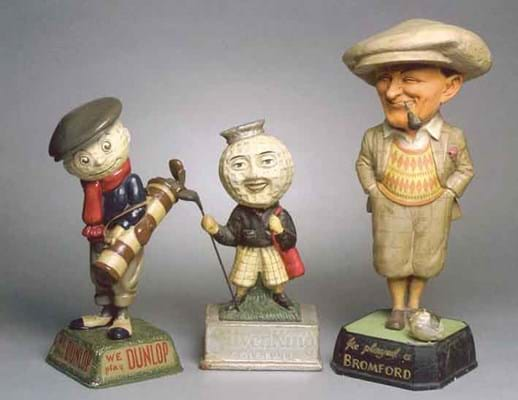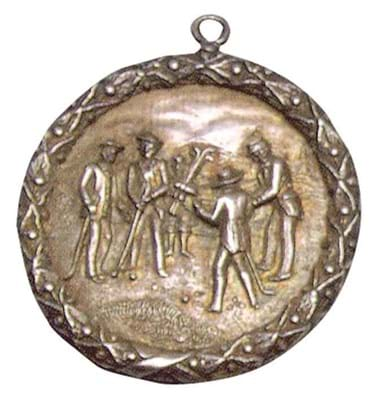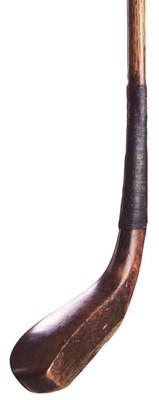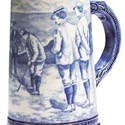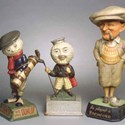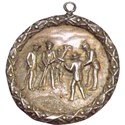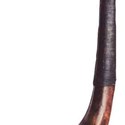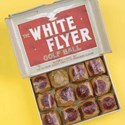With its slight, but solid top, price-sensitive middle, and shaky bottom, this niche area does represent a microcosm of the problems facing the everyday antiques dealer.
And talk of a crisis in the market will not have eased following the January mini-series of golf memorabilia sales in Chester and Edinburgh. Both specialists, Kevin McGimpsey at Bonhams and Rachael Doerr at Lyon & Turnbull, were keen to point out the continued enthusiasm of a small coterie of ageing American collectors, the handful of new clients advertising can attract, and the prospect of some very good things coming on to the market in the near future.
However, as membership numbers of collecting societies are markedly down, the new blood which golf collecting needs to find from among the millions of titanium-wielding, arm-pumping twenty- and thirty-somethings was not evident at the January sales. Accordingly, there was something of a High Street January Sales look to the current pricing of entry-level collecting material.
A decade or so ago, when offered in bundles of six or more, hickory shafted golf clubs were the workhorses of a booming golfiana market selling happily at an average of £20-30 each to new collectors or to those supplying the few clubs in America where the hickory game is still played. The message from the dozens of multiple lots sold last month is that routine, early 20th century clubs are now worth £8-12 each.
Surely now - in the best interests of vendors - these should really be the stuff of a general sale.
In all, as the bottom end of the market collapses, more than 200 lots in Bonhams' sale were sold to bids of £100 or less. Even at the tighter L&T event, the figure topped the 70 mark. However, further up the rarity scale, there are still monied collectors who enjoy filling the gaps.
Competition was slight, but L&T were happy to receive a solid £3800 (estimate £4000-5000) for a longnose spoon c.1875 by H. Philp which the consignor had bought from Iain Walker, Antique Golf, in 2000. At Bonhams, a mid-19th century sand iron with a large concave face sailed to £1950 against an estimate of £500-750.This latter had been reshafted, but it was a rare club from the era when the first gutta percha balls were controversially being introduced into the game.
More price sensitive at Chester were a Cochrane's Mammoth niblick and a c.1880 golden beech driver by A. Patrick. The niblick was a sound example of a well-known patent club from the 1920s which usually sells in four figures but here took £620 against hopes of £700- 1000.
The driver, which was in very good condition save a modern coat of varnish, and had an ownership stamp, H.A. Peto, to both head and shaft, went just over the lower estimate at £640.
Although the Valderrama Club stepped in to bid a record £24,000 for a documentary feather ball by William Robertson at L&T last July, most 'featheries' have also failed to keep pace with earlier values.
There were two at the Edinburgh sale.
One, with a painted finish that seemed to bear the impressed initials TWD, sold at £2800 (estimate £2000- 3000). The other, with seams slightly open demonstrating the construction of these rare survivals, made a modest £1400.
Bonhams's best single ball was The Perfector, a rare A. Patrick patent c.1882 with a hand-hammered, Forgan-style, mesh pattern. In good condition, with some original paint and no strike marks, it sold on reserve at £1400 (estimate £1500-2500).
There was, however, plenty of competition for a grey and white Craig Park White Flyer golf ball box containing a dozen wrapped, mesh-patterned balls. These sold at £1450 against an estimate of £450-750, but to find them like this, all in factory-fresh condition as issued in 1927, must be very rare indeed.
This was L&T's first January sale of golfing memorabilia and a catalogue based around the golfing library of PGA professional Alan Walker which, together with other books, reported separately in ATG's Antiquarian Books column.
Golf Ceramics
Another highpoint of the sale was a 16-strong selection of golf-related ceramics - otherwise pedestrian pieces of early 20th century pottery or porcelain which are given a financial lease of life by their subject matter. Both consignors were Americans for whom the weak dollar is a plus factor when selling in Europe.
A punchy £2800 (estimate £1200-1800) bid came from a London buyer for a 6.25in (16cm) high Royal Bonn blue and white tankard printed with golfers putting on a links course.
The same paddle secured a 7.75in (19cm) high Gerz, salt-glazed stoneware beer jug, decorated in relief with golfers and caddies, at £1600 (estimate £1500- 2000).
One of four lots sold to a Dutch buyer was a porcelain tankard by New Jersey's Lenox factory. Decorated in the round with a monochrome green scene of golfers, the 6in (15cm) jug went below estimate at £880.
The O'Hara Dial Co. - best known as suppliers of watch dials to Waltham in Massachusetts - was represented by two pewter-mounted steins, each decorated with a brown-monochrome depiction of a golfer in a landscape and inset with a panel to the lid.
One, with a panel painted with an elderly cavalier and inscribed, Go Fetch a Quart of Sack sold at £780, while the other, decorated with the words of Auld Lang Syne, took £600.
Of seven pieces of Dickensware by the Weller Pottery of Zanesville, Ohio, the most desirable was a 10in (25cm) tapering cylindrical-form vase decorated with a lady golfer among trees. It sold at £580 (estimate £400-500).
Bonhams also enjoyed individual success in their 'related items' category. Sold at £900, was a black and white poster promoting various Edinburgh and Mussleburgh clubs and a charitable fund-raising concert of 1842 where Mr S. Cowell will sing "The Golfer's Garland" in character attended by his Cady (sic). Although damaged to one side, and lacking pictorial interest, this early 2ft x 12in (60 x 30cm) broadside, proved undercooked at £80-120.
Silver Medallion
There was also plenty of competition for a large 2.75in (7cm) diameter silver medallion marked for Edinburgh 1856, cast with a scene of four players and a caddy and inscribed Presented to the Pau Golf Club 1857. Pau was the first golf course in mainland Europe and was founded in 1856 by former British Army officers. It sold to an American buyer at £3700 against an estimate of £450-750.
Golfing Figures
There were three good 'point-of sale' figures, two consigned from a golf club in Ireland.
The papier-mâché Dunlop Man on a We Play Dunlop base is not a particularly rare beast and there were two in this Chester sale. The better example was in almost mint condition and brought £900. The more typical example, with broken club heads, paint defects and the like made £200.
In generally very good condition was an original early 1940s version of the Bromford Man. He is more difficult to find than the much-reproduced figure of the Penfold Man (same chap, different base) and he sold at £750. However, none of these figures can hold a candle to theSilver King Man.
This 'egg box' figure, c.1930, is generally regarded as the second-most difficult to find point-of sale device after the Silver Town Queen. The Chester example had a repair to the hand holding the club (not uncommon with this figure) but it retained most of its original paint and much of the base lettering was intact. It did not disappoint, selling to a dealer bidding for a client at £6600, well beyond hopes of £1000-2000.
Has golfiana a limited lifespan in the salerooms?
If 'international' auctioneers such as Bonhams choose to persevere with single- catalogue, twice a year golfiana sales it can only be for nostalgic moments like this.
The buyer's premium at both Bonhams and Lyon & Turnbull was 17.5%.

